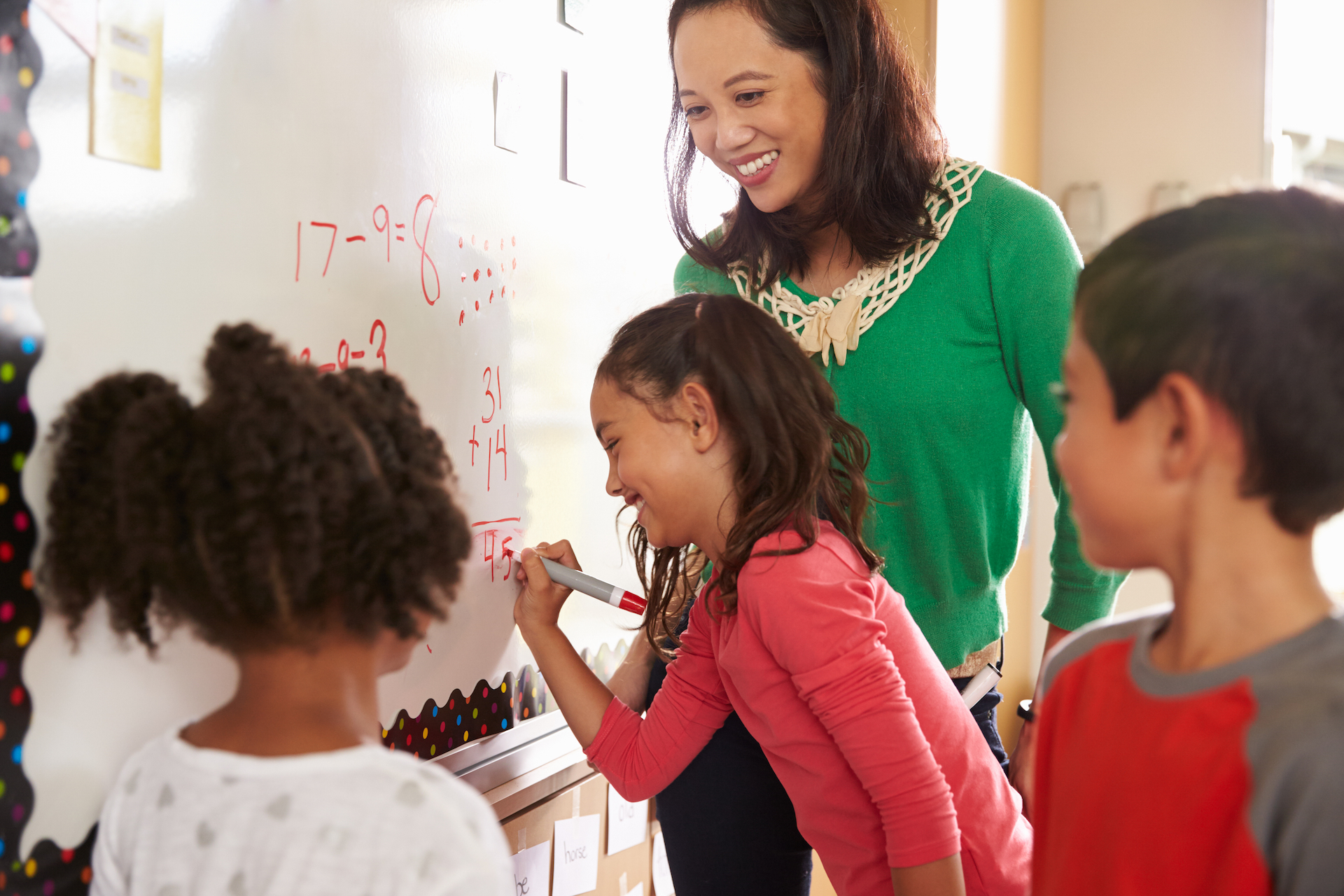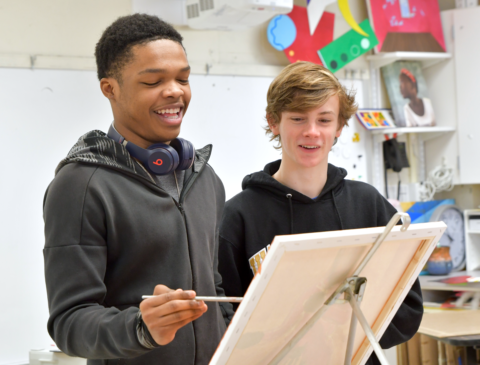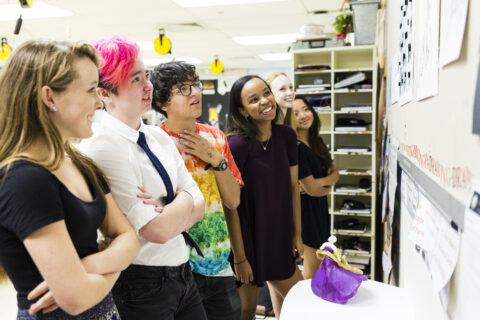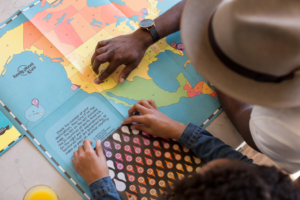Mathematics is an area of study that carries with it intense emotions. Those who find success early and often, experience the ecstasy of a beautiful solution unfolding in their mind’s eye and under their pencil. Those who struggle to master the concepts, algorithms, and logic needed for success, develop an aversion, even a deep dislike, for any kind of mathematical endeavor. I don’t know all the research to quote here, but in my own experience I see and hear people express this rejection of math well into adulthood, limiting their engagement with many opportunities offered in the professional and functional world. Identifying the key foundational elements that lead to early mathematical success helps us as math mentors in our efforts to spur positive feelings toward math for the students we serve. To do this, we need to embrace our own mathematician-within (Gagnier, et.al, 2021) and increase our understanding of the foundational concepts of math to empower young learners as mathematical inventors and explorers of their unfolding world. Spatial perception and spatial representation are just such elements of success in early math and beyond.
In this short series of articles, we are highlighting three central themes that impact achievement in mathematics: 1) the human propensity toward number sense (and how to keep that alive), 2) the importance of spatial perception skills for mathematical acumen, and 3) the role of language in mathematical conceptualization.
This is the second article in the series, considering the question – What is meant by spatial skills (including perception and representation), why does this matter to the development of mathematical practice, and what can we as teachers do to become intentional in creating opportunities for the development of these skills?
The thing is spatial skills can refer to many things:
1. Our ability to know where our body is in space and how far away stationary objects are in our environment. When this depth and distance perception is not established, the person might be seen bumping into furniture, misreading the depth of a step, or knocking items off tables as they get up from being seated. While most of us develop this mental schema as a matter of survival, for some (including the young) intentional guided exposure to this kind of navigation is needed to build an embodied spatial perception framework. Map reading and orienteering are excellent activities that can be done in and out of school to cultivate this sense of self in space. Why does this matter to math? Well, there is evidence that “experience with spatio-quantitative materials such as, walking along a number line mat, free play with blocks, or experience with board games and video games leads to improvement in math” (Fischer et al., 2011; Graziano et al., 1999; Ramani & Siegler, 2008). Kindergarten teachers have known this forever. However, we all need to take inventory of our current math curriculum to check the embedded frequency and quality of engagement with these spatio-quantitative materials. If they are not significantly represented in the suggested lesson design, we need to incorporate them ourselves as a common strategy for concept integration. A little creativity, preparation, and dedication of time can make a difference for students who may not have been offered the time in free play needed to establish these mental parameters during early childhood.
2. The transference of physical and pictorial models into mental images that can be used as templates to provide structure that supports logic when approaching mathematical processes. When students in my classes struggle with the use of algorithms, or even the decision about which method will be most successful for a given problem, it is not uncommon for them to say they can’t “visualize” what it is they need to do. Being able to articulate this is half the battle, because as a teacher it cues me to provide scaffolds which acknowledge the need for a pictorial model when a student hasn’t yet internalized the mental schema for the situation. In fact, inaccuracy when predicting distance along a number line (number line estimation) is one of the most reliable predictors of persistent mathematical difficulties (Bull, 2020). As with body-level depth and distance perception, this is a skill that can be internalized over time through targeted practice (Japanese abacus practice*).
3. Concepts such as left/right, vertical/horizontal, and adjacent/opposite describe spatial relationships that support logic and complexity of analysis in mathematics and science as students explore geometry, measurement, and natural phenomena. While mathematics and spatial skills are, strictly speaking, separate domains, they have been shown to be correlated in studies of elementary students. Practice moving physical objects in activities like building with blocks provides repetition with trial and error, which seems to translate into mental visualization capacities that allow young learners to mentally maneuver items with mathematical relationships. Anecdotally, I have noticed a connection between an affinity with fractions and the propensity to build and/or draw during down-time in my second and third grade classes over the years. Building with blocks and engaging in crafts like origami may feel like non-academic endeavors. However, evidence is growing for a connection between time spent constructing 3-D models and the spatial skills that predict math achievement. We need to find simple ways to equip our classrooms with construction materials and designate time for open-ended exploration in early elementary and tactical use in later math and science.
4. Fitting parts of a whole together (think Tetris, Blokus, and jigsaw puzzles) concurrently requires and develops spatial skills. When we can mentally visualize and plan toward bringing different shapes together into a mosaic whole, we have laid down synaptic pathways that will support this same kind of spatial conceptualization in later problem-solving. Before the chemical structure of DNA was fully understood, Maurice Wilkins and Rosalind Franklin began to infer a three-dimensional, helical form when looking at high resolution X-rays of DNA fibers. To do this, they had to rely on their interpretation of two-dimensional images and their own developed spatial perception to imagine the possibilities. In smaller ways, our children use these same skills to solve omission problems in math that may require the solver to interpret functions on either side of the equals sign. 7x + 5 = 33 becomes easier to solve when a young mathematician is able to maneuver amounts mentally and target a process useful to find the value of x. Studies point to the fact that similar neural circuits are activated when people process spatial and numerical information (Hubbard, et.al., 2005; Walsh, 2003). I have taught in every grade K through fourth and in all of these I would lay out puzzles, Blokus, chess, and even Battleship for my students to engage with during morning settling-in time. Committing this time and allowing independence (with my mediation when needed), students for whom spatial skills weren’t fully developed were able to observe peers and build an understanding of the spatial requirements before jumping into a low-key competitive situation.
This is by no means an exhaustive list of what is possible and needed for the full development of spatial perception and representation skills, but every small step we take to incorporate any one of these ideas in intentional ways will make a difference when our students later need to rely on spatial pathways of thinking to connect with the mathematical concepts and processes we introduce over the course of their school career. Spatial skills can be trained and spatial training improves performance in elementary, middle, and college-level math (Cheng & Mix, 2014; Lowrie, Logan, & Ramful, 2017; Mix et al., 2021; Sorby et al, 2013).
References:
Bull, R., Lee, K., & Muñez, D. (2020). Numerical magnitude understanding in kindergartners: A specific and sensitive predictor of later mathematical difficulties? Journal of Educational Psychology.
Gagnier, K., Holochwost, S., & Fisher, K. (2021). Spatial thinking in science, technology, engineering, and mathematics: Elementary teachers’ beliefs, perceptions, and self‐efficacy. Journal of Research in Science Teaching. 59. 10.1002/tea.21722.
* Disclaimer: This video shows a strong example of transference of concrete models to mental images. However, the CTTL asks that you listen with caution when one adult describes this in terms of left brain and right brain functioning.




